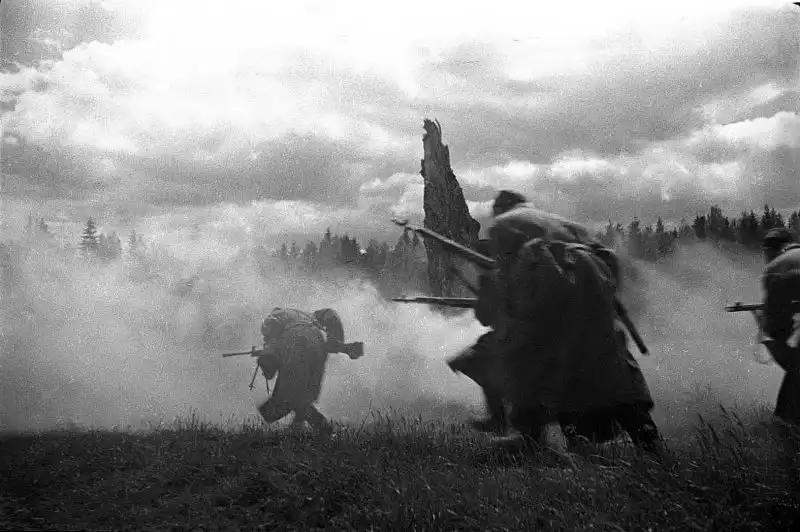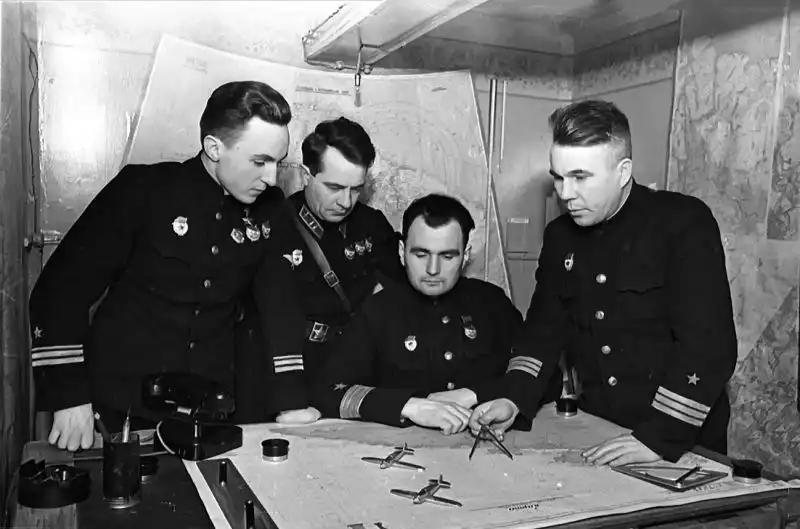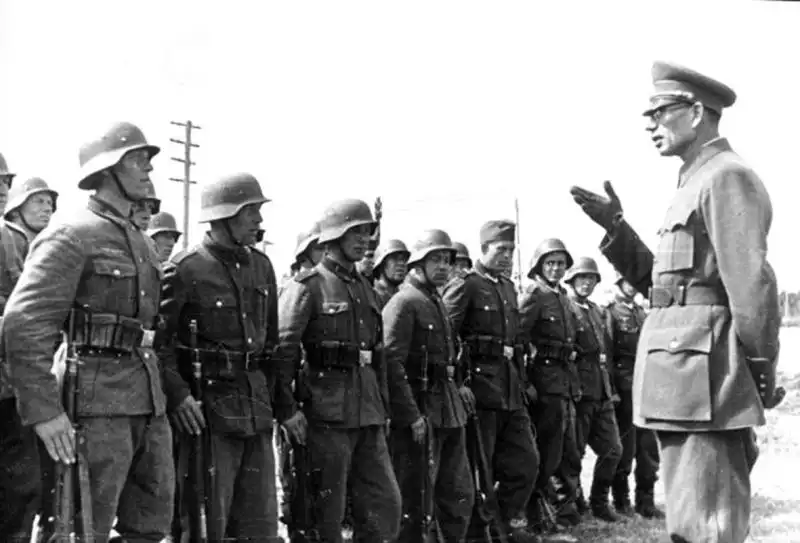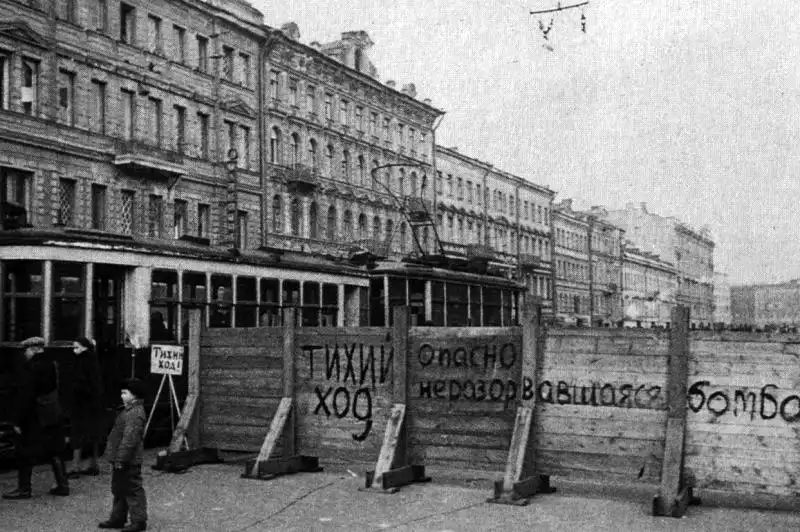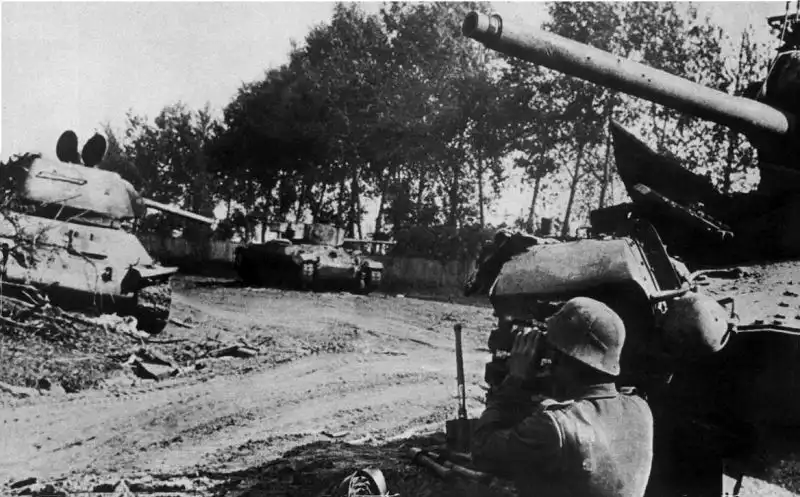German Soldier Demonstrating Captured Soviet Maxim Anti-Aircraft Machine Gun, Summer 1941
November 6, 2025 - Reading time: 4 minutes
German soldier posing with a captured Soviet Maxim anti-aircraft machine gun, summer 1941.
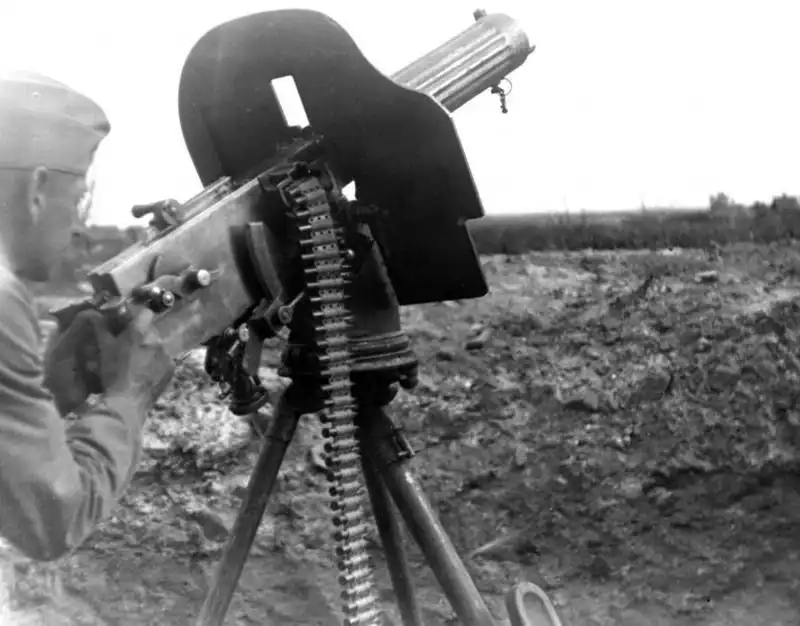
This photograph shows a German soldier posing with a captured Soviet Maxim M1910 machine gun during the early border battles of Operation Barbarossa in the summer of 1941. The weapon is mounted on the Vladimirov 1931 universal anti-aircraft tripod, which allowed the Maxim to be elevated for firing at low-flying aircraft. The soldier appears to be imitating anti-aircraft fire, treating the moment more as a demonstration or a battlefield novelty.
The Maxim M1910 was one of the most widely used machine guns in the Red Army at the beginning of World War II. Though originally adopted before World War I, the weapon remained in service due to its reliability, durable construction, and sustained-fire capability when paired with a water-cooled barrel system. Mounted on the Vladimirov universal AA mount, it provided Soviet infantry units with a flexible tool for engaging both ground and air targets.
During the rapid German advance in 1941, large quantities of Soviet weapons were captured intact, often due to chaotic retreats and encirclements. German troops frequently reused these captured machine guns, especially when ammunition supplies could be sourced from seized stockpiles. In many cases, the Germans found Soviet heavy machine guns rugged and effective, even if outdated in design.
This image highlights both the improvisation and the symbolism of occupation: German soldiers interacting with the equipment of the enemy they were pushing back, often amused or intrigued by unfamiliar designs. Yet behind the staged appearance lies the reality of intense combat, large-scale Soviet losses, and the brutal opening phase of the Eastern Front — a conflict that would soon transform into one of the deadliest theaters of war in human history.
Technical Photo Data:
📍 Location: USSR
📅 Date: Summer 1941
📝 Subject: Captured Soviet Maxim machine gun on Vladimirov AA mount
📷 Photographer: Unknown
- Soviet heavy machine guns 1941
- German use of captured equipment WWII
- Eastern Front early war imagery
- Maxim anti-aircraft mount history
- WWII infantry support weapons photography
Category
Search
Categories
- Unidentified WWII Photos (12)
- World War II Photos 1937 (1)
- World War II Photos 1938 (1)
- World War II Photos 1939 (3)
- World War II Photos 1940 (5)
- World War II Photos 1941 (99)
- World War II Photos 1942 (58)
- World War II Photos 1943 (50)
- World War II Photos 1944 (77)
- World War II Photos 1945 (40)
- WWII and Postwar Photos 1946 (1)
